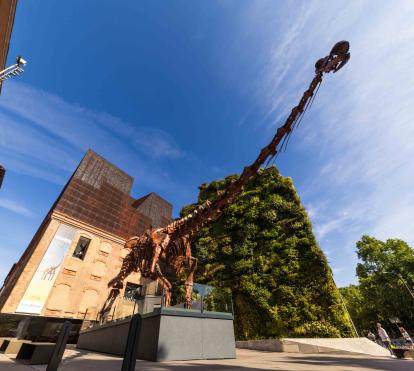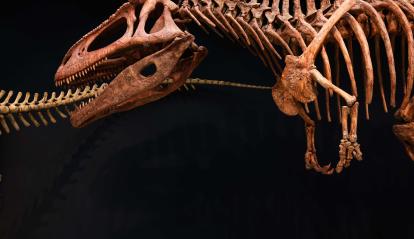
A majestic replica of the largest dinosaur known to have inhabited the Earth is the star of the exhibition Dinosaurs from Patagonia, which explores the evolution and diversity of the dinosaurs from this region.
The palaeontological treasures of Patagonia take centre stage in this exhibition, which features an impressive replica of a Patagotitan mayorum, one of the largest dinosaurs ever discovered, measuring over 30 metres in length. Visitors will also be able to view six original bones of this species (two femurs, a scapula, a humerus, an ulna and a radius) from the specimens discovered in 2012 in the province of Chubut, in Argentine Patagonia, one of the world’s richest regions in dinosaur fossils.

In addition to admiring the immensity of this animal, which lived more than 100 million years ago, visitors can discover the diversity of the Patagonian dinosaurs thanks to specimens of 12 different species, from the only carnivorous dinosaur with horns to the oldest known dinosaurs. All this, while learning how evolutionary changes occurred in different groups and retracing the ancient history of our planet and the life forms that inhabited it.
Approaching the work of palaeontologists means understanding how they can track the planet's biodiversity in detail, measuring extinction levels and the impact on surrounding ecosystems. By observing recurring patterns over millennia, they can infer cause and effect in a unique way.
- Conception and production: Egidio Feruglio Museum, in collaboration with the ”la
Caixa” Foundation


